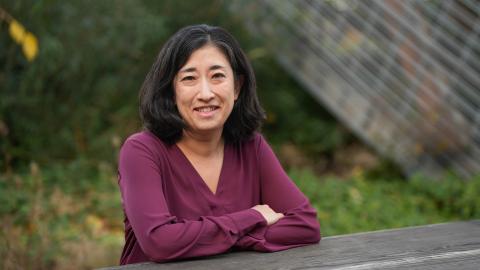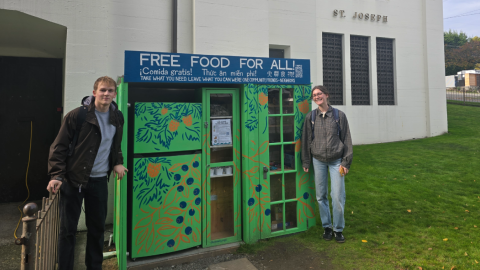More than a century ago, Seattle leaders set out to control and redirect the Duwamish River. They dredged the riverbed and dug out its twists and turns. Wetlands were filled in, the valley was paved over and a system of hydrology was severed. What had been a wild, winding river valley with regular flooding became an angular straightaway built for industry.
But when UW postdoctoral scholar Maja Jeranko looks out at the Duwamish, she sees the river fighting back.
“The water was always there,” Jeranko said, “and now it’s fighting to come back up.”
The river returned with devastating effect in December 2022, when a king tide and heavy rainfall flooded the South Park neighborhood, submerging homes and shuttering local businesses. The underserved neighborhood faces a significant risk of future floods.
To mitigate that risk, the City of Seattle has updated the neighborhood’s stormwater drainage system and launched a new flood-warning system. But the Duwamish River Community Coalition, a nonprofit focused on river pollution and environmental health, saw an opportunity for something greater. The DRCC asked a team of UW researchers to help develop flood adaptation plans that are community-based, culturally responsive and that enrich the local environment.
Forging solutions in the flood zone
“In the community, people don’t think there’s been enough engagement. There’s all this talk about flood mitigation, but all they see are sandbags,” Jeranko said. “So DRCC was like, ‘Look, we really need the people who live in the flood zone to understand the solutions.’ Because we have this long-lasting relationship with them, they see us as someone who’s able to provide a list of solutions, not favor one over the others, and do it in an informative way.”

Boosted by a Tier 3 grant from the UW Population Health Initiative, Jeranko and a team representing five UW departments, the Burke Museum and the DRCC are engaging with the community. This fall, the team will present the neighborhood with an expansive list of flood mitigation options and encourage city leaders to consider people’s preferences.
Early work shows the community would favor nature-based solutions, Jeranko said. Floodable parks, for example, would provide ecological, recreational and public health benefits to the entire community, while storing flood water during storms.
Centering community voices
“It has been wonderful to collaborate with the UW team on this to make sure we are centering community voices in every single step of the planning for climate resilience,” said Paulina López, executive director of the DRCC. “Community leadership and representation is indispensable to bring climate justice to the Duwamish Valley.”
Jeranko hopes their community-based model will be replicated by communities across the country facing similar risks from climate change and sea level rise.
“Even though UW and a lot of other universities really support and invest in community-engaged work, a lot of times it’s fundamentally hard to make that research happen,” Jeranko said. “But the Population Health Initiative grant was about supporting all those things.”
Other collaborators on the project are Nicole Errett, BJ Cummings, Katelin Teigen and Juliette Randazza of the Department of Environmental & Occupational Health Sciences (DEOHS); Celina Balderas Guzman of the Department of Landscape Architecture; Bethany Gordon of the Department of Civil & Environmental Engineering, Sameer Shah of the School of Environmental and Forest Sciences; Amir Sheikh of the Quaternary Research Center and the Burke Museum; and López and Robin Schwartz of the DRCC.
Adapted from the original post here.
For more information on the project, or to learn more about the UW Population Health Initiative, visit the Initiative’s website or contact Alden Woods at acwoods@uw.edu.




